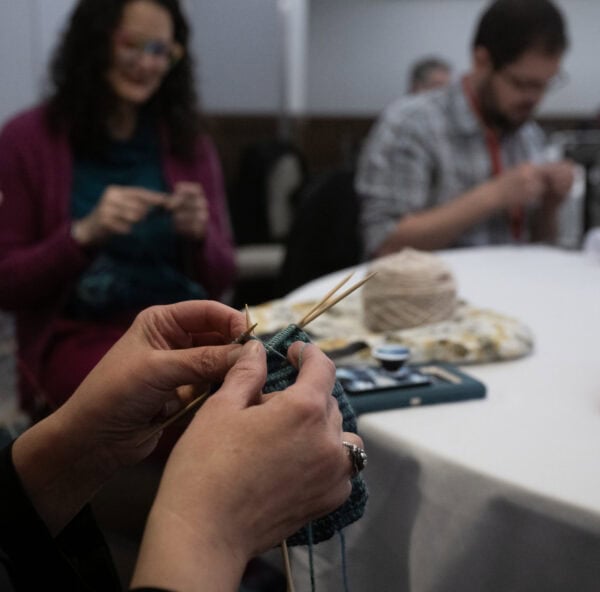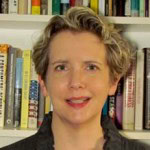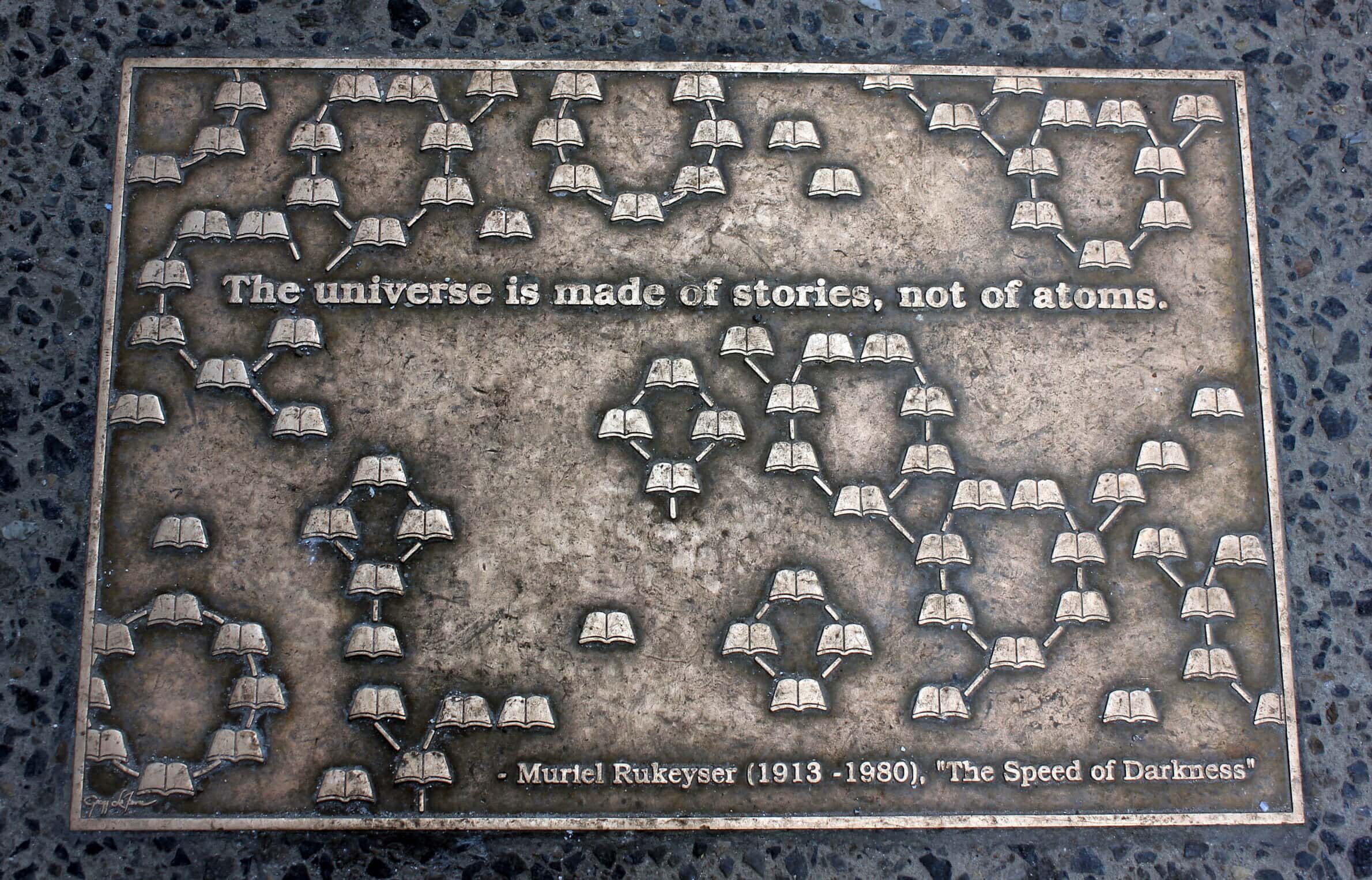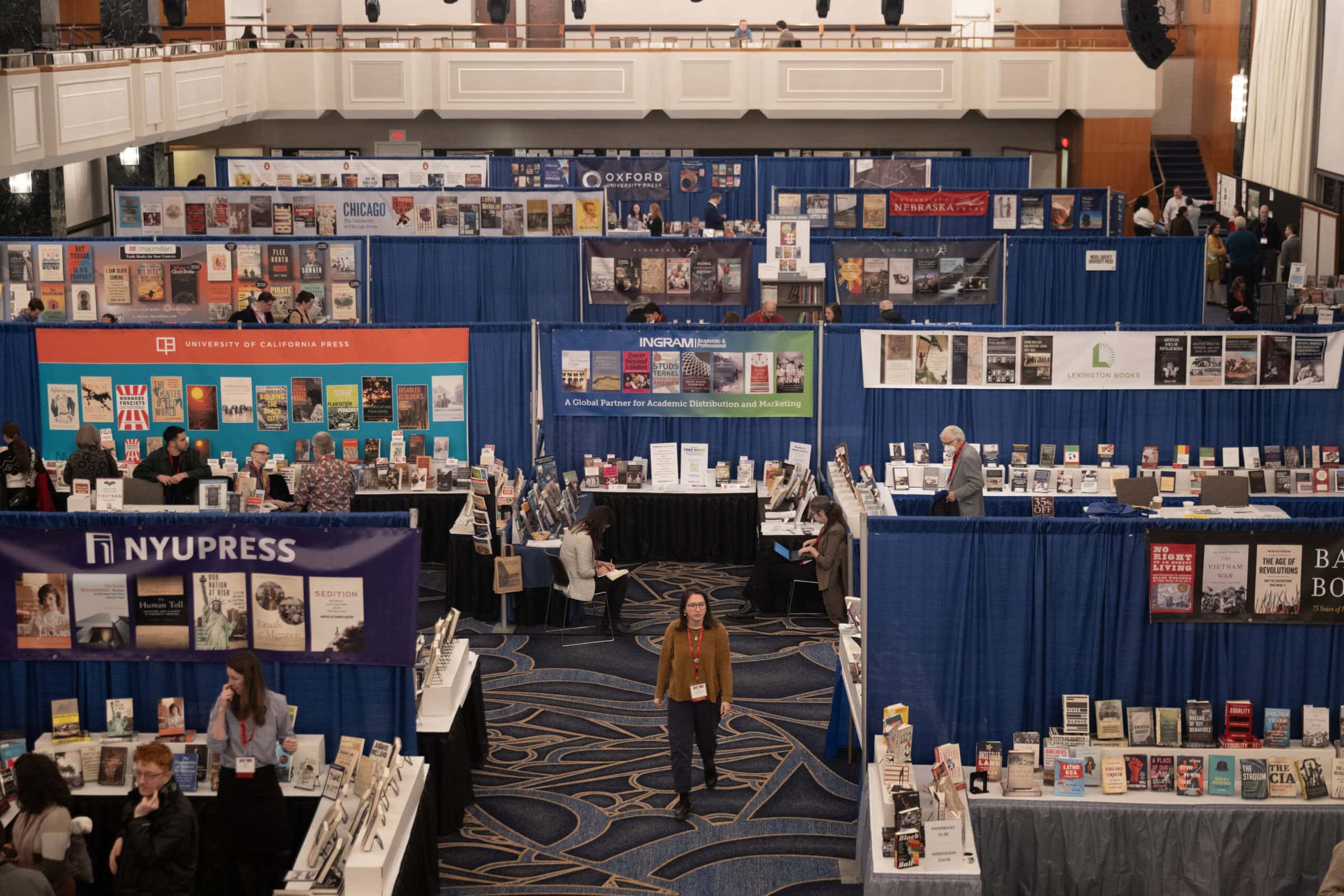At the 2025 annual meeting in New York, I sat down with fellow historians and needlecrafters at likely the first-ever AHA fiber arts circle. As we discussed the history of needlework, teaching with material culture, and the conference, I thought to myself, This is why we do this.

Marc Monaghan
I have been involved in planning 26 AHA annual meetings, and I still have a moment like that every year. Sometimes at a particularly inspiring session. Sometimes during a lively and productive conversation with people I usually see on Zoom. Sometimes just watching others happily chatting at receptions. Something reminds me why it is still important for historians to gather, in person, to discuss our work, build connections, and inspire each other.
I have seen how the atmosphere of the meeting changed for the better since we stopped hosting job interviews. That change was part of an ongoing evaluation of the purpose and goals of the meeting. Throughout the multiyear planning process that goes into organizing each conference, the Program Committee, the Council, and other AHA committees ask: What should the meeting of a professional association look like in the 21st century? What kinds of programming will best enable our members to learn from one another? What will they enjoy?
That doesn’t mean abandoning research panels. In fact, we had more of those in 2025 than ever before. It means reframing those sessions as a conversation among the presenters, as well as between the presenters and the audience. The best AHA sessions create a dialogue between scholars whose research focuses on different times, places, and aspects of the past. As the nation’s largest annual gathering of historians, this event convenes a broader range of historians than any other.
Not all of our ideas have worked. Experiments with precirculated papers, unconferences, and informal meetups didn’t gain much traction. (But the latter did inspire the fiber arts circle.) Lightning rounds, roundtables, and multiple sessions organized around one topic have been more successful. The Program Committee is now experimenting with seminar sessions, in which facilitators lead discussions around a particular topic or theme with a small group of attendees who sign up in advance. The Teaching Division tried a related new idea at the 2025 meeting, a content cohort, which brought 25 educators from secondary schools, colleges, universities, and museums together for a series of discussions about the implications of new research for the classroom. Cohort members met early in the meeting, fanned out to attend sessions on a common theme, and came back together to discuss new classroom ideas sparked by the sessions.
There are many ways to learn from fellow historians at the conference. Professional development at the New York meeting included activities and workshops about managing career transitions ranging from first jobs to retirement, leaving the professoriate, teaching writing, working at a small liberal arts college, podcasting, writing op-eds and pitching them to a magazine, and incorporating new research into the K–12 classroom. Historians could learn from their peers about working at a two-year college, moving into administration, and navigating the current political environment. Groups of podcasters, digital historians, journal editors, and teachers offered to share their expertise with fellow historians.
The deadline for submitting proposals for the 2026 annual meeting in Chicago will have passed by the time you read this article. But it will not be too late to participate in workshops, seminars, and other opportunities—not to mention those informal conversations in hotel hallways. We will even be accepting ideas for gatherings like the fiber arts circle. Don’t hesitate to reach out to annualmeeting@historians.org if you have ideas about ways to keep the conversations going. After 26 years, I can say with confidence that the annual meeting is always evolving, and it never hurts to try something new to bring historians together.
This work is licensed under a Creative Commons Attribution-NonCommercial-NoDerivatives 4.0 International License. Attribution must provide author name, article title, Perspectives on History, date of publication, and a link to this page. This license applies only to the article, not to text or images used here by permission.



